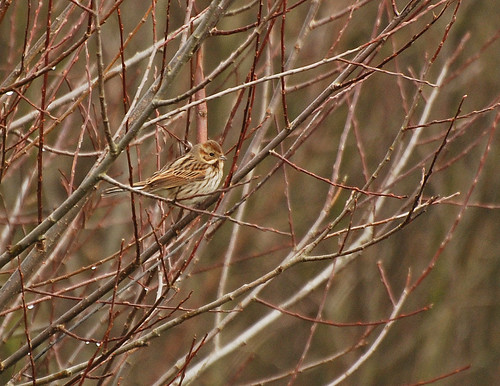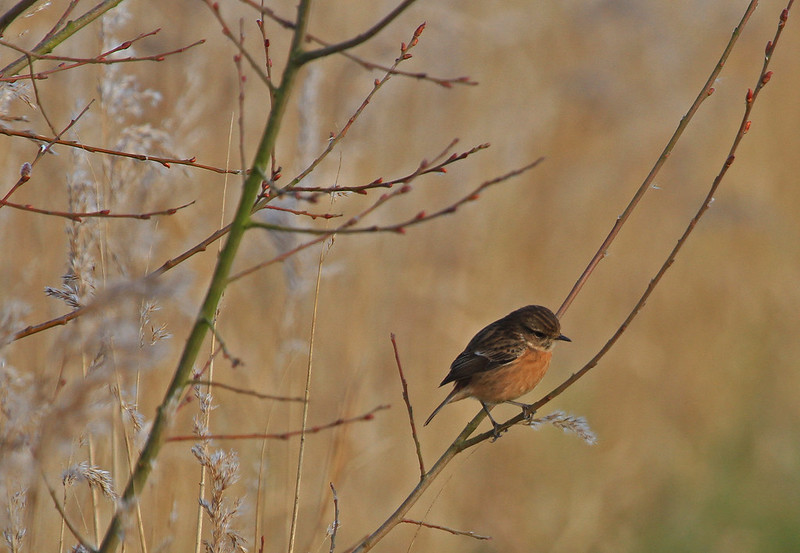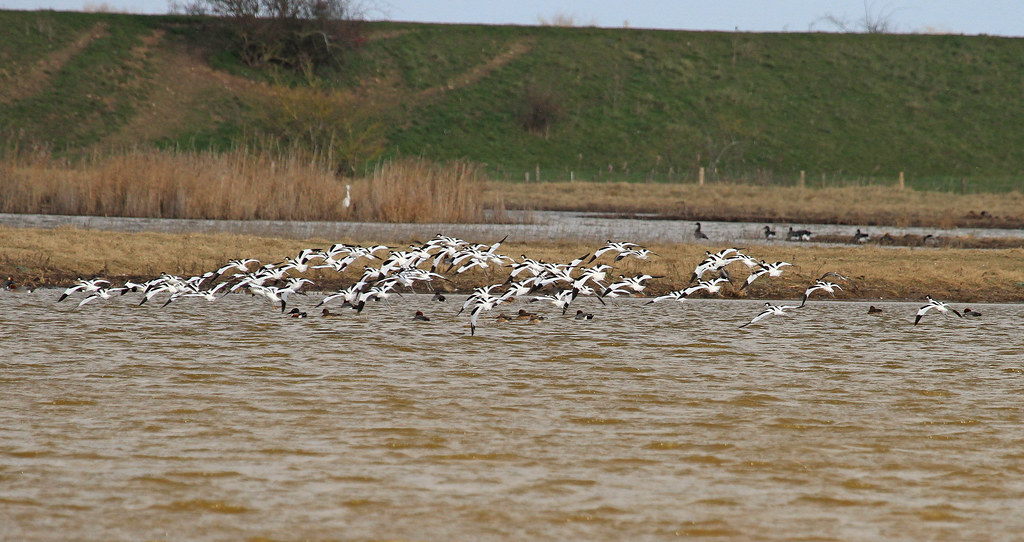Around 10 years ago I used to do voluntary work at Wicken Fen which lies in the flat emptiness between Cambridge and Ely. Wicken Fen is one of the last and the largest piece of remaining fenland in East Anglia and is home to a plethora of wildlife. It’s owned and managed by the National Trust in such a way that diverse habitats favouring different species are established and maintained. When I worked there we were engaged in various activities such as repairing boardwalks, fences and hides, scrub clearance, which was a good activity for freezing winter days because it involved a huge fire to burn the felled scrub, but my favourite job was building raised ponds with wheelchair access so disabled children could safely do some pond dipping. Which is an activity that everyone should be able to do, child or not. All you need is a net, a jar, a magnifying glass and a pond and a sunny day is turned into a fantastic voyage of biological discovery.
My re-exploration last weekend started from Upware at the back end of the Fen where we parked and joined Wicken Lode. We had counted over 30 species of birds within the first half hour of our walk. If it had been solely down to my good self the number would have been rather less because my skills when it comes to recognising birdsong are a tad limited. Fortunately I was with my friend, David, who’s aural acuity is considerably better honed than mine, and I’m highly envious of his ability to detect the song of distant bird species and identify them. One of the first birds to greet us in the car park was this mistle thrush perched on top of a telegraph pole:
 Mistle thrush – Turdus viscivorus (Dansk: misteldrossel)
Mistle thrush – Turdus viscivorus (Dansk: misteldrossel)
… and a great spotted woodpecker, also finding a handy perch at the top of a telegraph pole:

Great spotted woodpecker – Dendrocops major (Dansk: Stor flagspætte)
Great spotted woodpeckers make a characteristic drumming sound by doing what their name suggests and it is the frequency of the drumming, of around 40 beats per second, which generates the resonant sound. Anatomical examination of their skulls has revealed the presence of built in shock absorbers which prevent them damaging their brains when they drum. They feed on tree seeds such as acorns and insects which they dig out from under the bark of trees and they can also take birds eggs and chicks which they have been known to steal from birdboxes by drilling holes through the walls and plucking them out.
We eventually managed to tear ourselves away from Upware and head out along Wicken Lode on to the Fen where a Cetti’s warbler (Cettia cetti, Dansk: cettisanger) gave away his location by singing in a way that only Cetti’s can. It’s an amazing sound and I can highly recommend having a listen here. These recordings don’t quite do it justice, but you get a feel for it. Also on the Lode were a family of three mute swans; male, female and one cygnet. Mute swans are always photogenic but I felt particularly blessed when the male spread hs wings and shook himself down:

Mute swans (Cygnus olor, Dansk: knopsvane)
We turned off the Lode and headed along Harrisons Drove where we came across a field of very impressive bovines. In order to manage the fen (and at the same time draw in more visitors, no doubt) cattle and horses are used to trim the vegetation back naturally. I’d never seen the cattle before and they are magnificent animals – looking more like a cross between a highlander and a bison than traditional farm cattle:

They must be hardy beasts indeed to survive on the meagre nourishment offered by the fen
Also along the drove I spotted a hen harrier (Circus cyaneus, Dansk: Blå kærhøg) quartering the field, either a female or a juvenile, identifiable by the pale band around the rump just infront of the tail feathers. In my opinion, spotting a harrier, even a fleeting glimpse, justifies an expedition into the fens early on a freezing morning. Alas it was too far away to photograph, but when after another couple of hundred metres we entered a hide overlooking a lake, there were plenty of subjects for photography…
 This lake was home to hundreds of ducks – we estimated around 800 from 5 species that we could see… as well as coot and mute swan. Watched over by the longhorns.
This lake was home to hundreds of ducks – we estimated around 800 from 5 species that we could see… as well as coot and mute swan. Watched over by the longhorns.
I don’t think this lake is there in the summer because looking at the area on Google Maps there is no water, and David pointed out that their were no diving ducks such as pochard (Aythya ferina, Dansk: taffeland – which tranlates as ‘table duck’ which shows what the Danes think of them!) tufted duck (Aythya fuligula, Dansk: troldand) or goldeneye (Bucephala clangula, Dansk: hvinand), suggesting the water was too shallow. But there were large numbers of shallow feeders such as gadwall (Anas strepera, Dansk: knarand), shoveller (Anas clypeata, Dansk: skeand), pintail (Anas acuta, Dansk: spidsand), mallard (Anas platyrhynchos, Dansk: gråand) and wigeon (Anas penelope, Dansk: pibeand). We had seen three flocks of wigeon (and heard them too, they make a great sound) fly over and land on the water just before we got to the hide. Some of them were on the lake above and lots more were on an adjacent one:

Wigeon. Lots of them! I counted around 60 in this group.
And in between the two lakes were numerous reed bunting (Emberiza schoeniclus, Dansk: rørspurv) flitting between the hedgerow and the path and pausing to pluck seeds from the seedheads of the reeds, hence their name…
 Male reed bunting – one of my better reed bunting shots
Male reed bunting – one of my better reed bunting shots
And the female:
We saw 44 species of birds that we could identify on our way around Upware and the Fen. And as well as all the birds Wicken is home to a phenomenal diversity of insects, large mammals including roe deer and otter, small mammals including shrews, voles, mice and the predators that hunt them, and reptiles including lizards which can be seen basking in the sun on the boardwalks and fenceposts early on summer mornings. Now I’ve been back and rediscovered the Fen I’ll make sure I get back later in the year and post about the changing wildlife in what is a unique collection of ecosystems.



















